Planned developments require improved road infrastructure
Kent County Council secured government funding from the Housing Infrastructure Fund (HIF) to improve the Grovehurst junction on the A249 near Sittingbourne. This interchange with junction 5 of the M2 was identified as a key junction likely to experience future capacity problems as a result of significant planned housing and commercial developments in the area over the next 20 years.
Kent County Council needed to complete this infrastructure upgrade within the timescale set by the HIF agreement. The upgraded junction needed to accommodate significant increases in traffic, while improving safety. It also needed to provide new walking and cycling routes to link with the new housing developments and existing networks.
The council wanted to ensure the new junction introduced sustainable benefits and supported economic growth in the area. The site posed particular challenges associated with safeguarding local ecology, which included populations of great crested newts, badgers, water vole and common reptiles such as slow worms and common lizards.
The project was further complicated by ownership of the affected roads being split between Kent County Council and National Highways. That meant elements such as lighting, signage and drainage had to meet the requirements and standards of each authority.
Having worked with SYSTRA on previous transport development schemes, Kent County Council appointed the company to carry out feasibility studies, public consultations, outline and detailed design work, and provide construction support for the Grovehurst junction scheme. SYSTRA took on the consultancy roles of engineering design, environmental and transport planning, as well as being Principal Designer.
Multi-disciplinary teams devise optimum design for complex road junction
SYSTRA began by carrying out feasibility studies and exploring options to reduce the need for traffic to pass through the centre of Sittingbourne on the A2 –helping to reduce pressure on the A429 Grovehurst junction. This would unlock the potential for commercial developments to proceed and enable the delivery of more than 4,500 homes by 2034/35. We then developed design options to optimise the junction for predicted traffic flows, considering various alternatives to minimise the impacts on existing traffic movements.
We developed three design options, including a dumbbell roundabout, two signalised junctions and a gyratory – all to be designed in accordance with Design Manual for Roads and Bridges (DMRB) and Kent County Council design standards . The gyratory flyover was chosen as the preferred option. It involved constructing a new bridge to the east of the existing bridge over the M2, new slip roads, pedestrian and cycle facilities, traffic signals, additional lanes, drainage systems and attenuation lagoons, as well as access and maintenance tracks and bays.
We successfully prepared and delivered the outline design within the agreed timeframe and budget, securing the buy-in of key stakeholders through extensive consultation. Following the positive outcome of outline design, Kent County Council commissioned SYSTRA to deliver the detailed design and construction phase support.
As Principal Designer, we produced detailed designs for all elements of the junction, including the highways, new single-span bridge and geotechnical elements, including bridge abutment foundations and wing walls, plus earthworks and associated drainage. In addition, we developed landscape designs to address ecological and environmental considerations, including the need to deliver biodiversity net gain across the site.
Our detailed designs were informed by extensive surveys and investigation work, carried out by multidisciplinary teams at SYSTRA. This work included ground investigations, archaeological investigations and traffic surveys. We conducted extensive consultations with the public and multiple stakeholders as part of the planning application process. Ecological surveys assessed the presence of protected species, and informed proposed habitat enhancements and species translocations. When we received notification from adjacent developers that water voles were present, our ecology team engaged landowners, the council and a nearby country park to identify suitable receptor sites. This negated the need to create on-site receptor areas, which would have delayed the construction works.
We provided support to the project’s construction contractor, Jackson Civil Engineering, to ensure detailed designs were accurately translated into the final scheme and to ensure complex conditions set out in the planning permission were met. The HIF funding provided to Kent County Council had to be used within a set deadline, and our construction support focused on delivering the project within this timescale.
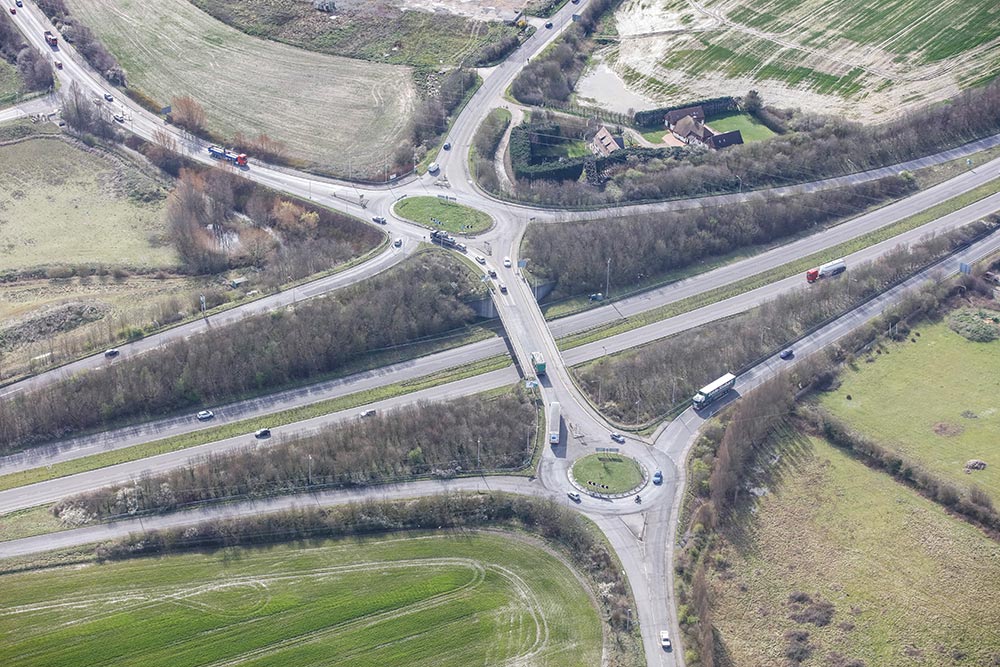
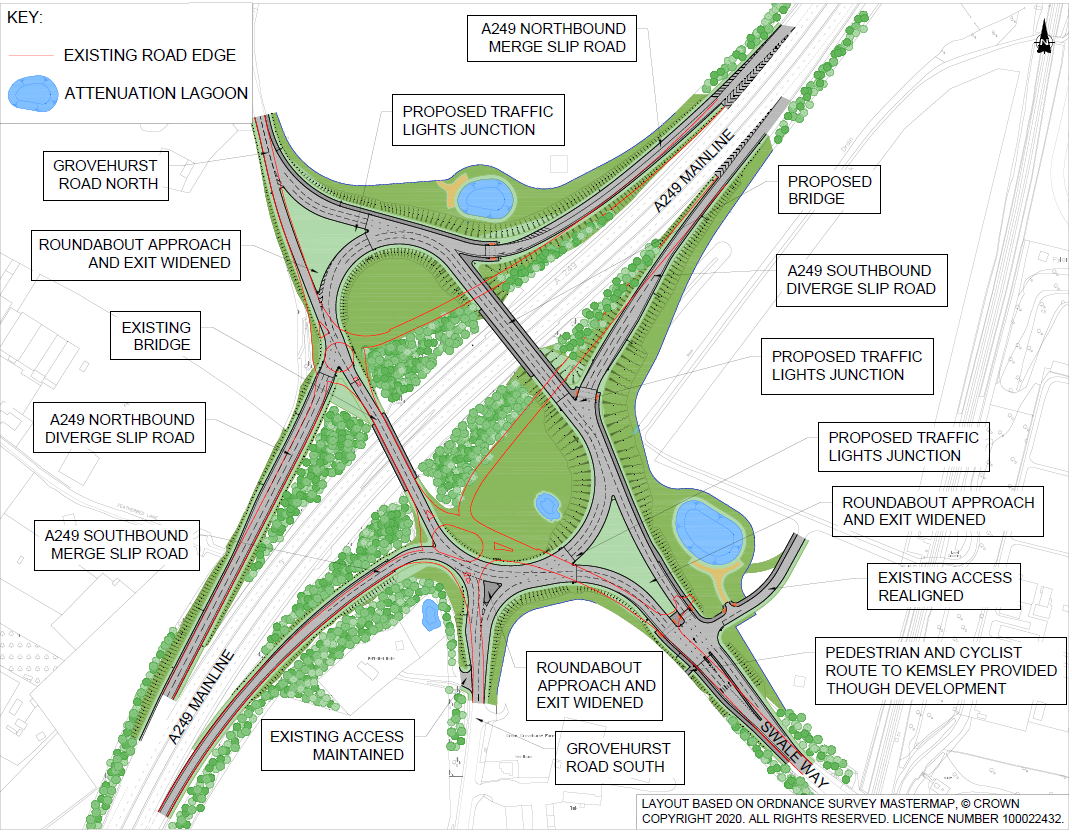
Combining environmental, transport, engineering and design expertise
For this major transport and environmental consultancy and design project, SYSTRA put together a project team comprising specialists in highways, structures, geotechnical, ecology, environment, drainage, planning, and contract management.
During the outline and detailed design stages, we reviewed the key performance indicators (KPIs) of Kent County Council and National Highways, to ensure our proposed designs would meet these requirements and industry standards. To improve safety and streamline traffic flows, we reviewed previous accidents and traffic data to ensure the new network would work within capacity while limiting accidents. To meet targets for economic growth, our designs aimed to reduce congestion and delays and make the area more accessible and attractive to all users and future residents.
Improving environmental outcomes was a key focus for the project. While the legislation requiring Biodiversity Net Gain of 10% had not come into effect during the planning stage of the project, SYSTRA applied the necessary principles to achieve this target through landscape design. For this site, we calculated a net gain of 24% for habitats and 10% for hedgerows. Our rigorous environmental assessments included arboricultural, ornithological, reptile and water vole surveys, air-quality and noise assessments, contaminated land studies, and the production of a Construction Environmental Management Plan (CEMP). We developed environmental procedures to protect existing ecosystems and species, including obtaining necessary licences for great crested newts and water voles. Given the proximity to river courses, we also developed flood risk mitigations to minimise any potential disruption caused by flooding.
To help cyclists, walkers, and other vulnerable road users, we carried out a thorough Walking, Cycling and Horse-riding Assessment and Review (WCHAR), which led to improvements in footpaths and new toucan crossings. The design incorporated many features for pedestrians and cyclists, helping to improve well-being by promoting active travel. The upgraded infrastructure also aimed to support local businesses by making the area more accessible and attractive to customers, while reducing congestion.
SYSTRA adopted a collaborative approach with key stakeholders, including National Highways, parish councils and local businesses. We held meetings and consultations to gather valuable feedback and provide updates on the project. The timing of the planning and design phase coincided with Covid-19 lockdown periods, which could have caused costly delays. However, we kept the process on schedule by developing an online virtual exhibition hall, which provided an engaging and effective platform for online consultations. This innovation ensured that dialogue was maintained with the public and stakeholders throughout the scheme.
Our efforts to build close relationships and adopt a collaborative approach with the client and all stakeholders enabled challenges to be addressed promptly and contributed significantly to the successful delivery of the project.
Enhanced road interchange delivers safety, economic and environmental benefits
The project was a great example of multidisciplinary teams from SYSTRA working together to address challenges, find solutions and fulfil client objectives at every stage of the scheme.
The construction of the new gyratory at Grovehurst junction will enable housing, commercial and industrial developments to progress in line with the local plan, while alleviating congestion, improving cycling and walking opportunities, and enhancing safety for all road users. In addition, the scheme helps to safeguard local ecology and improve biodiversity.
The project achieved its ultimate aim of delivering infrastructure improvements to enhance residents’ quality of life, promote economic development, and create a more efficient and sustainable transport network on this major trunk road.
By deploying advanced design tools, innovative consultation methods and comprehensive environmental assessments, SYSTRA played a pivotal role in delivering this essential infrastructure to meet current needs while enabling planned future growth.
How can our experts help?
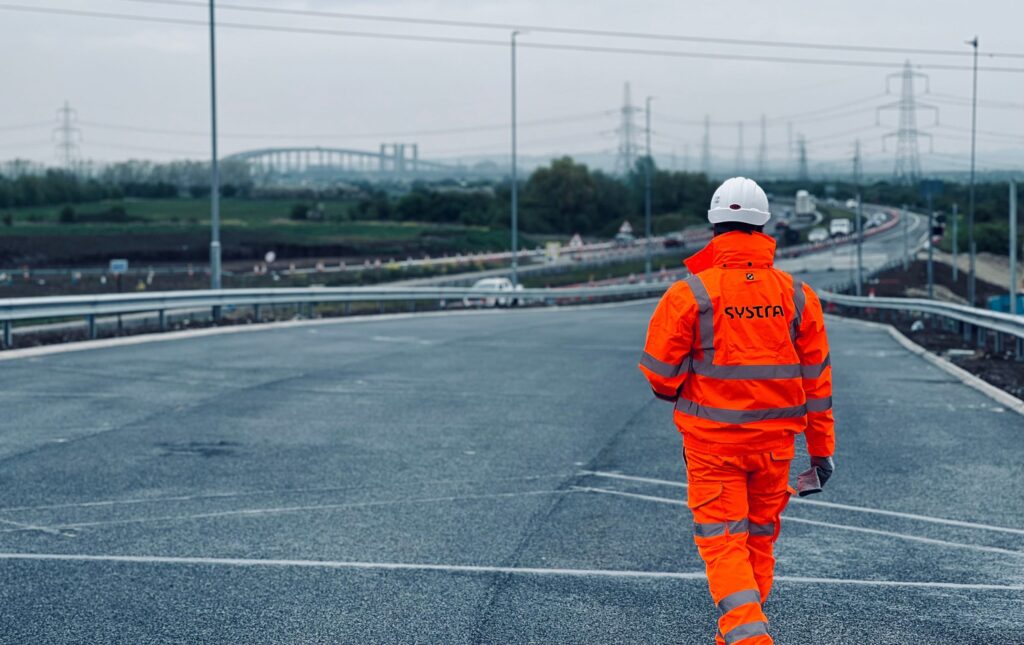
- markets
Highways & Roads
Read more sur Highways & Roads
Our Services
Read more sur Our Services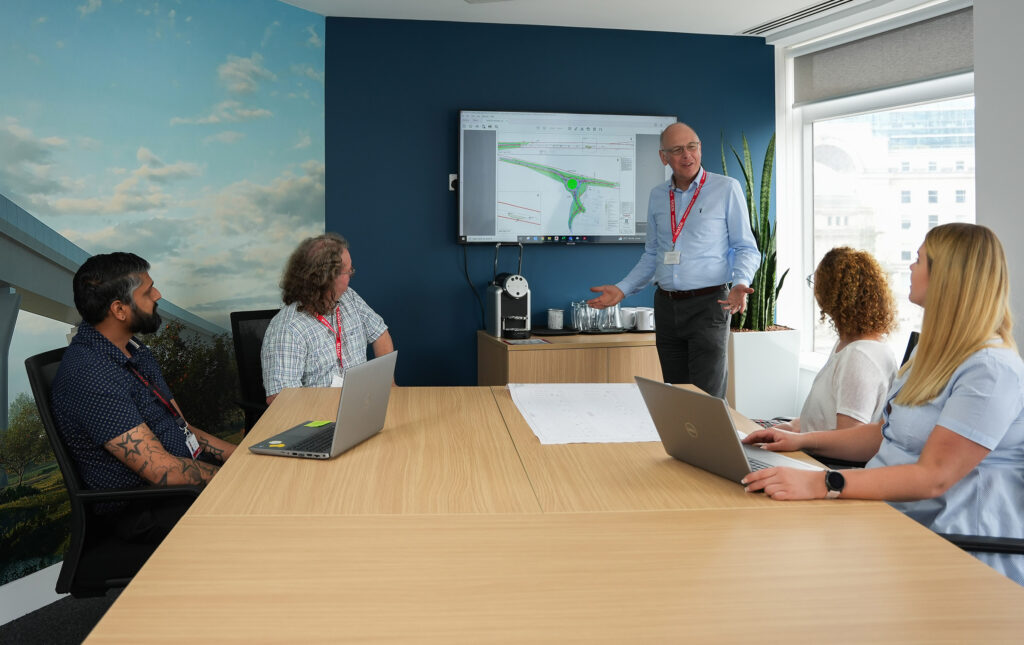
- services
Highways, Road Design & Engineering
Read more sur Highways, Road Design & Engineering
- services
Strategic Transport Modelling and Simulation
Read more sur Strategic Transport Modelling and Simulation
- services
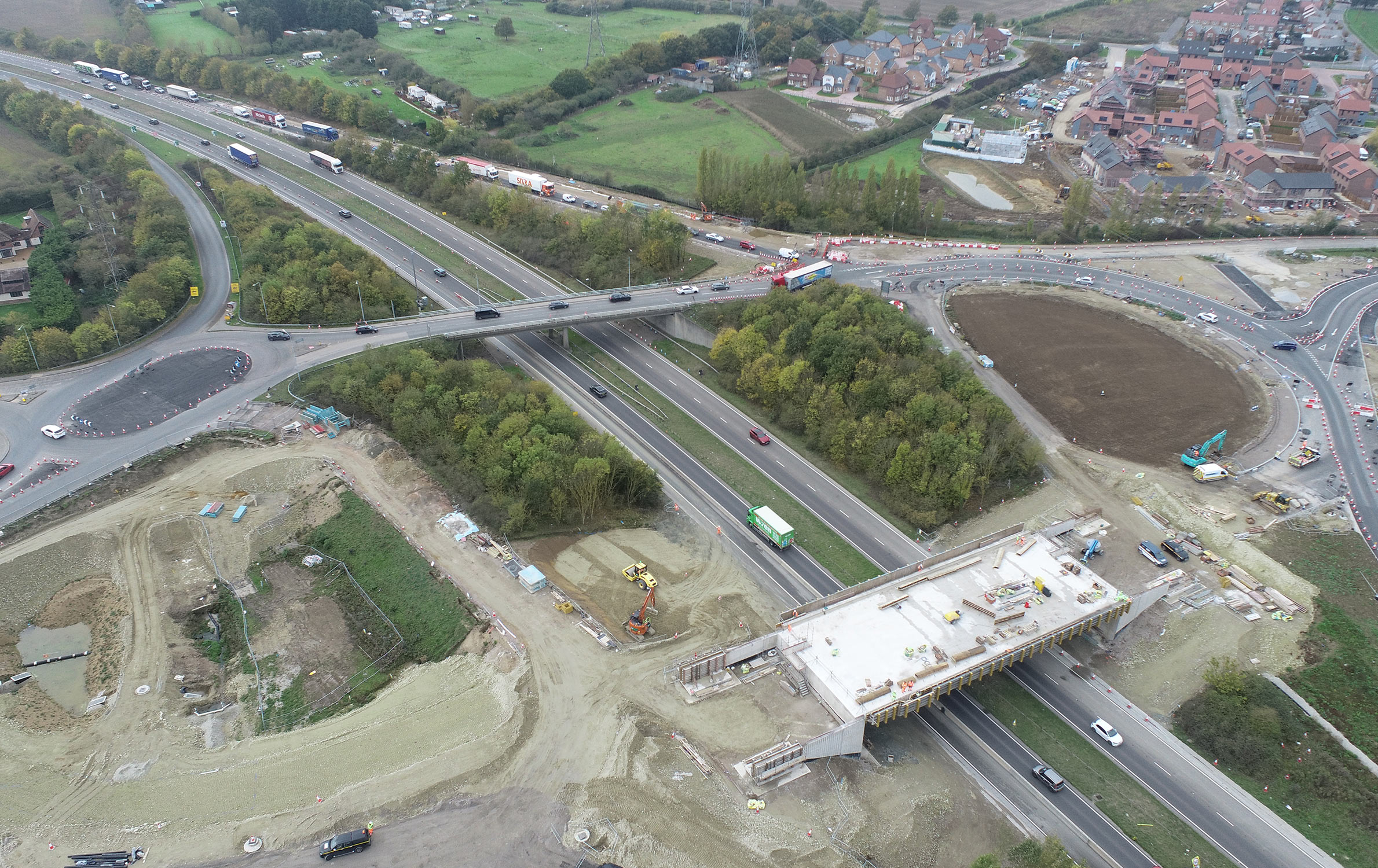
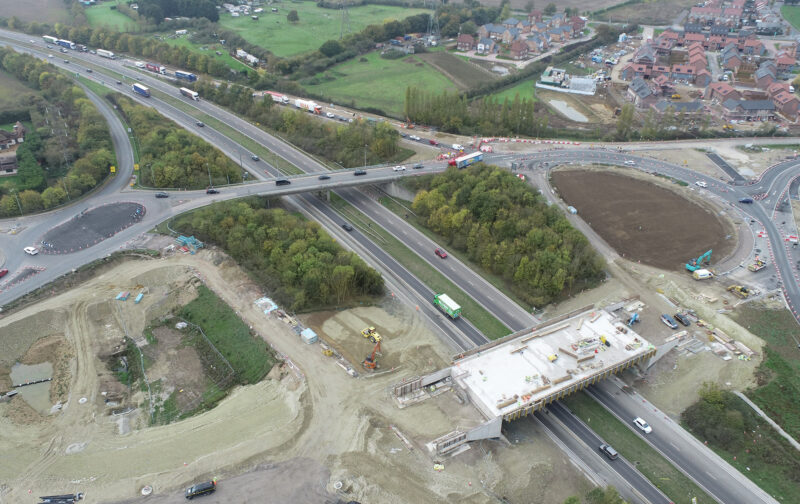
 Australia
Australia  Brazil
Brazil  Canada
Canada  Chile
Chile  China
China  Columbia
Columbia  Denmark
Denmark  Egypt
Egypt  France
France  India
India  Indonesia
Indonesia  Ireland
Ireland  Italy
Italy  Malaysia
Malaysia  New Zealand
New Zealand  Norway
Norway  Panama
Panama  Peru
Peru  Poland
Poland  Portugal
Portugal  Saudi Arabia
Saudi Arabia  Singapore
Singapore  South Korea
South Korea  Spain
Spain  Sweden
Sweden  Taiwan
Taiwan  Thailand
Thailand  Türkiye
Türkiye  United States
United States  Vietnam
Vietnam